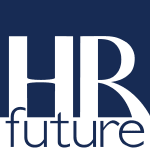Human resources professionals play a crucial role in shaping the work environment to enhance employee productivity and well-being. One often overlooked yet essential factor in workplace design is office lighting. Proper lighting significantly affects employees’ focus, mood, and overall performance. By understanding how different lighting types and intensities impact the workplace, businesses can implement effective solutions that foster a more conducive and productive work environment.
The Connection Between Lighting and Employee Performance
Lighting influences how employees interact with their workspace. Insufficient or overly harsh lighting can lead to eye strain, headaches, and fatigue, reducing productivity levels. Conversely, well-designed lighting can improve concentration, energy levels, and overall job satisfaction.
Natural light is particularly beneficial for workplace productivity. Studies have shown that exposure to natural daylight improves mood, reduces stress, and enhances cognitive function. Employees working in offices with ample natural light report higher job satisfaction and lower instances of absenteeism. When natural light is limited, artificial lighting solutions must be carefully designed to mimic daylight’s positive effects.
Types of Lighting and Their Effects on Employees
Understanding different lighting types is key to creating an optimal work environment:
- Natural Light: The most beneficial form of lighting, natural daylight helps regulate employees’ circadian rhythms, leading to better sleep quality and improved daytime performance.
- Cool White and Blue-Toned Lighting: Ideal for task-oriented environments, cooler lighting (4000-6500 kelvin) promotes alertness and concentration, making it suitable for offices where detail-oriented work is required.
- Warm Lighting: Warmer lighting (2700K-3500K) creates a relaxed atmosphere, which can be beneficial in break rooms or collaborative spaces where creativity is encouraged.
- Adjustable and Smart Lighting: Providing employees with the ability to adjust lighting levels based on their tasks and preferences can significantly enhance workplace comfort and efficiency.
Optimizing Workplace Lighting for Maximum Productivity
HR professionals can take practical steps to enhance office lighting and, in turn, improve employee well-being and productivity:
1. Maximize Natural Light Exposure
- Arrange workstations near windows to allow employees access to natural daylight.
- Use glass partitions instead of solid walls to distribute natural light throughout the space.
- Encourage employees to take breaks outdoors to boost exposure to daylight.
2. Invest in High-Quality Artificial Lighting
- Work with industrial electrical contractors to design and install an efficient lighting system that balances natural and artificial light.
- Use LED lighting, which is energy-efficient and provides better illumination without flickering or producing excessive heat.
- Incorporate tunable lighting that allows employees to adjust brightness and color temperature according to their needs.
3. Eliminate Glare and Shadows
- Position lighting fixtures strategically to prevent glare on computer screens and work surfaces.
- Use diffused lighting solutions such as indirect fixtures or task lighting to minimize harsh contrasts and shadows.
- Install adjustable desk lamps for employees who need additional control over their lighting conditions.
4. Adopt Human-Centric Lighting Design
- Implement lighting systems that change throughout the day, simulating natural daylight patterns.
- Consider using smart lighting technology that automatically adjusts based on occupancy and available natural light.
- Encourage ergonomic lighting practices by providing guidelines on optimal workstation lighting setups.
The Role of HR in Workplace Lighting Improvements
HR professionals should collaborate with facilities management teams and electrical contractors to ensure lighting upgrades align with employees’ needs. Conducting workplace surveys to gather employee feedback on current lighting conditions can help HR teams identify areas for improvement. Additionally, offering educational sessions on the importance of lighting and ergonomics can empower employees to create a more comfortable workspace.
Why Prioritizing Office Lighting Benefits Employees and Business
Effective office lighting is more than a design consideration — it directly impacts employee productivity, focus, and well-being. By maximizing natural light, investing in quality artificial lighting, and eliminating glare, HR professionals can create a work environment that enhances performance and job satisfaction. Partnering with trusted industrial electrical contractors ensures that lighting solutions are expertly installed and maintained, contributing to a healthier, more productive workplace. Prioritizing lighting improvements is a simple yet powerful way for HR professionals to support employees and drive organizational success.
Nicole Drougas is Marketing & Commercialization Executive at Dubak Electrical Group. She has been with the company for nine years. Drougas also serves as an industry ambassador and client market leader who is passionate about her work and company.


























